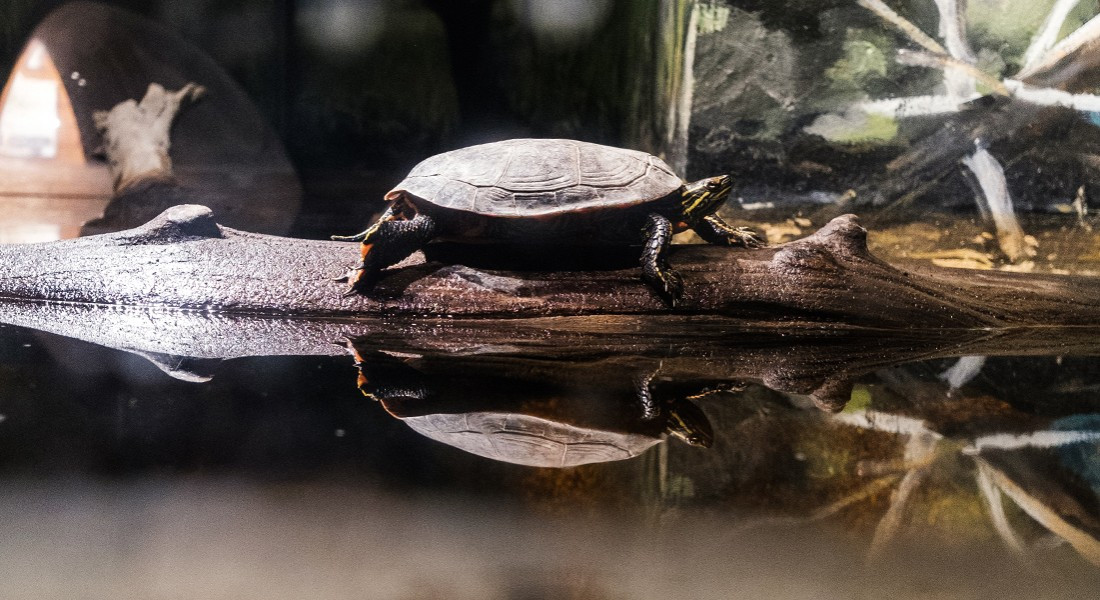To the Classroom and Beyond
How experiential learning is helping environmental education grow
Traditionally, we’ve been taught about the environment in a way that’s broken down and broken apart. Educating within the confines of four brick walls separates us from the world we’re trying to learn about and other humans we’re learning with.
But there are other options for ways of teaching that pull our eyes away from book- and classroom-exclusive study and help us engage with what we’re learning about and who we’re learning with.
EXPERIENTIAL LEARNING
Experiential learning is a process that focuses on engaging and reflecting as the foundation of learning and has us interacting differently within, and venturing beyond, the classroom.
Jobb Arnold is a professor of conflict resolution studies at Menno Simons College and the co-chair of the experiential learning network at the University of Winnipeg (U of W).
“You have people in classrooms engaging in hands-on activities, and that’s considered a form of experiential learning,” he says. “Typically, experiential learning involves going into the community (and) getting out of the classroom.”
Last summer, he ran an experimental course that incorporated experiential learning called “Practicing Land Based Reconciliation: From Shoal Lake to Winnipeg,” where students learned survival skills from Indigenous knowledge-keepers.
“I think it’s a really interesting way that group dynamics play out, if people are engaged outside of the classroom,” Arnold says.
Universities have already been applying this model through service learning, practicums and certain internships, but Arnold says that experiential learning is taking that even further.
“What we’re seeing with experiential learning (is) it’s extending that understanding that what we're learning here has to have some sort of intersection with the ‘real world’.”
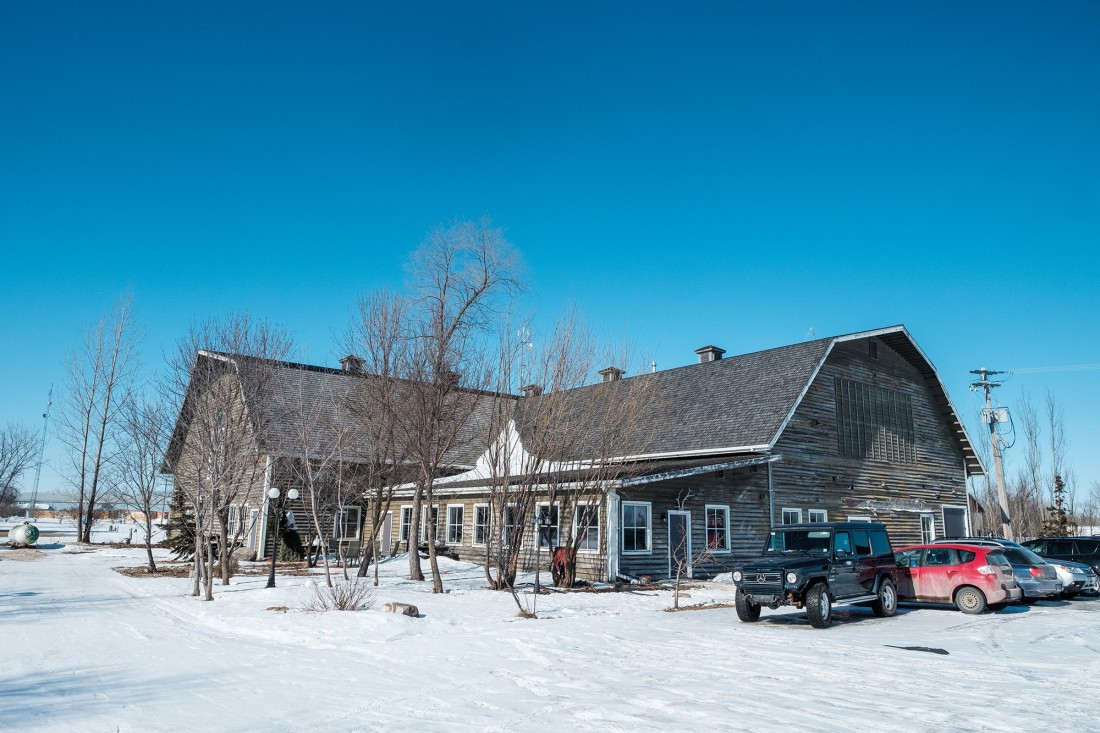
This former restaurant and car museum is being converted into a campus that will bring students and researchers together.
BEYOND FOUR WALLS
Being able to access spaces which offer opportunities to collaborate with individuals who have a diversity of knowledge is a part of integrating experiential learning into environmental education.
In November 2016, the U of W and FortWhyte Alive (FWA) signed a memorandum of understanding, which allows professors easier access to FWA for teaching purposes.
Barrett Miller, an outdoor educator at FWA, leads interpretive programming workshops linked to any Manitoba curriculum, from grade schools to groups or clubs, and works with educators to link their own programs to experiential learning.
“We try and engage all of the learning styles and senses as possible, and it’s just so much easier to do when (nature) is your classroom as opposed to four walls,” Miller says. “(You) can really engage everything, whether we’re always conscious (of it) or it just happens, it’s always something we endeavor to do.”
When creating these programs, Miller says FWA is trying to connect a classroom or learning experience with a real-world experience in a practical way.
Miller recalls a conversation he had with the principal of Helen Betty Osborne Ininiw Education Resource Centre in Norway House, who had reached out to him about bringing FWA’s programming to their school in hopes to get students outdoors.
It was then that a new notion struck them: it wasn’t that there was an inherent restriction on outdoor programming, it’s that teachers aren’t taught how to manage a classroom outside.
At the time Miller was leading volunteer orientation at FWA called “Natural Leader: How To Teach A Class Outside” and since the conversation, spearheaded expansion of the orientation to help guide teachers in outdoor education with their classes.
“We’ve built this whole ‘teaching beyond four walls’ program beyond that idea that teachers are just teaching. (They) take that practice wherever they go (and) don’t contain it within the box they normally do it in. The teaching space is not fixed. It moves with the teacher,” Miller says.
Some people may get the whole picture from sitting behind a desk, but Miller believes that individuals who are experientially learning develop a more holistic perspective beyond what’s taught in class.
“There’s a whole bunch of things just beyond the curriculum that you learn when you’re outside: decision making, how to look after yourself, the real value of community,” he says. “Whether that’s giving a snack to someone who forgot theirs, or you’re the recipient of a pair of dry socks because you didn’t pack any … there’s a lot of value in that.”
This allows grade-school students who come to FWA to step into roles the classroom wouldn’t normally allow.
“We see students on field trips sort of step up and become little peer leaders, and at the end of the day, some teachers say ‘I didn’t know that little kid had that in them’,” Miller says. “So it’s enough of a different spin on things and a different environment that you see good things come out of most people.”
Miller says it’s best to take advantage of your surrounding environment and use it as an asset to enhance your learning experience.
“Authentic experiences inside and outside are more important than exclusively trying to do one or the other. An authentic balance,” he says.
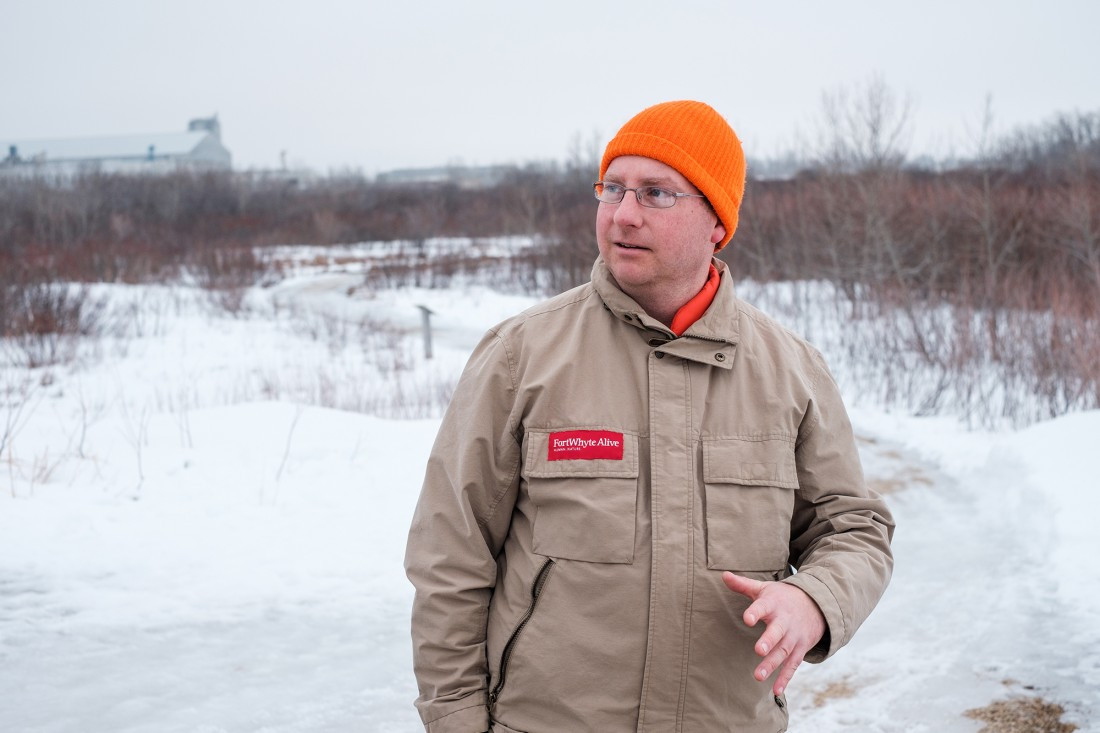
Barrett Miller is a special projects manager at FortWhyte Alive in Winnipeg.
CROSSING THE DISCIPLINES
Experiential learning blurs the lines around a conventional classroom and has learners engaging in experiences, creating an area to reflect and interact with what they’re learning about and who they’re learning it with, even within the confines of a university building, Arnold says.
“(There’s been) a bottom-up push, a call for connectedness (from) isolated niche degrees. Now we see cross-disciplinary and consultation work and its necessity,” Arnold says.
“What’s interesting (in a university context) is how to incorporate experiential learning in a way that compliments the type of education that people are getting.”
Bruce Hardy, founder of Myera group, has been conducting research with students and professors at the University of Manitoba (U of M) that breaks down the barriers between different areas of study, bringing together students from across all disciplines into one collaborative project.
“We need to adapt our students and adapt our world to these complex environments. Everything is interrelated, and what we usually do in universities is break things down,” Hardy says.
Hardy is also currently in the pilot phase of converting what was previously an auto museum and nunnery located in St. Francois Xavier (SFX) into a campus focusing on collaboration between students, food producers, healthcare providers and community members.
“A lot of times, universities have to come out with programs to address a need, (and) you have pedagogies that reflect those needs,” Hardy says. “The question that I have then is, as a society, how do we have community learning becoming a part of that innovation process?”
The research that’s being conducted at the U of M has been brought over to the SFX campus on a larger scale. Its focus is on developing a closed-loop environment that hopes to create self-sustaining food systems and better the economic practices and viability for food producers. Hardy is looking to offer that knowledge to anyone who wants to collaborate with them.
“In this facility, (it’s) about bringing that diversity together,” Hardy says.
Hardy has coined the term “community innovation campus” to describe the collaboration and cross-disciplinary work that will take place at the SFX campus.
"That’s what our facility is about. You came here with one discipline but you’re going to come out knowing your relationship with the other disciplines,” he says. “The type of learning that goes on here is experiential-based learning, so that’s pairing a honey farmer with a physicist, a bio-systems engineer with an entomologist.”
Hardy explains that while this knowledge transfer is happening between students under different disciplines, food producers who collaborate with them are also engaged in this exchange.
“A place like this is allowing (people) to have that dialogue around informal and non-formal education,” he says.
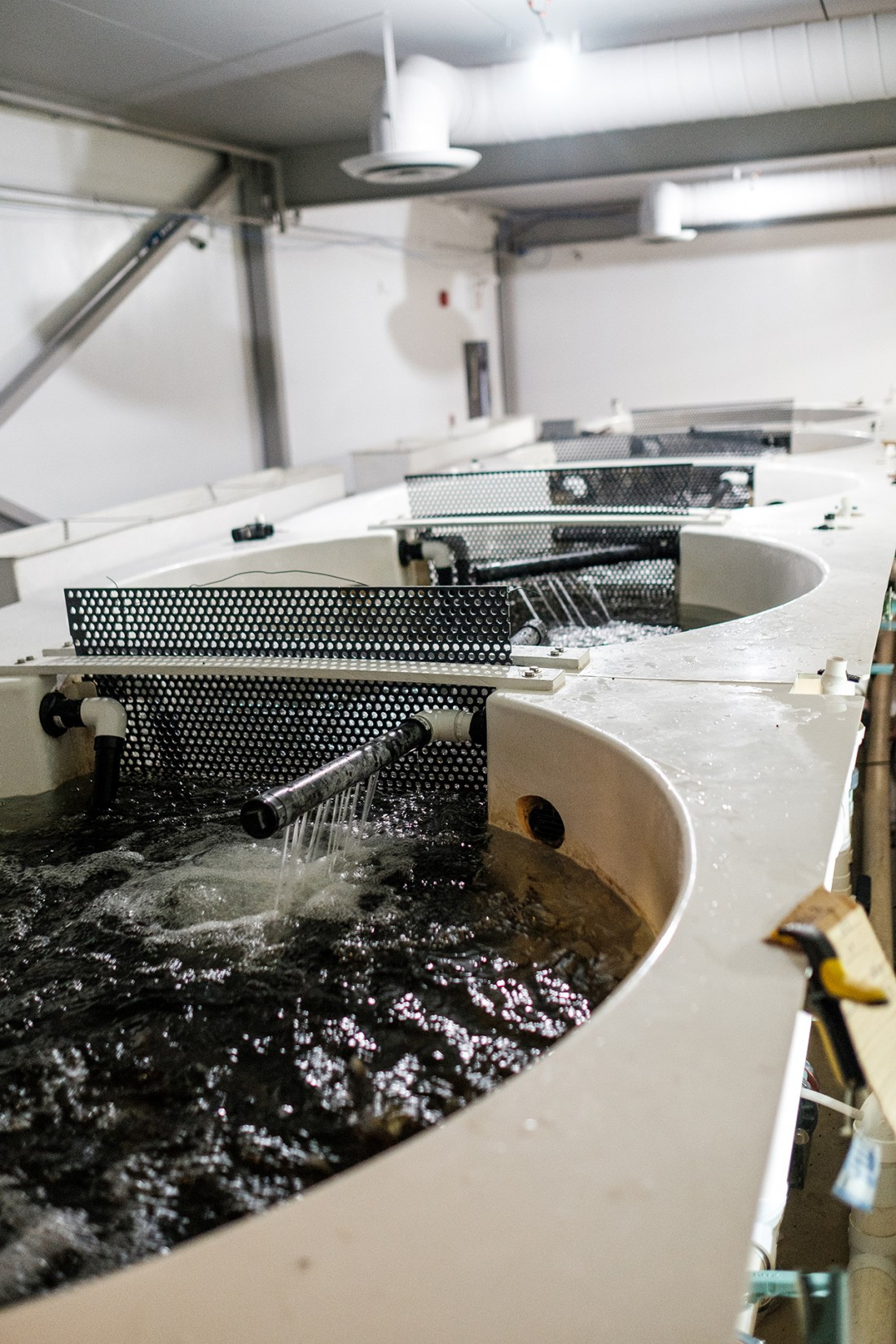
These fish tanks are used by Lisa Albrecht in her research on arctic char at the SFX campus.
CROSS-POLLINATION IN ACTION
Currently at the SFX campus, research is being conducted on how byproducts from arctic char can be turned into a source of nutrient-rich water and fertilizer to grow plants.
Lisa Albrecht who works in the department of biology at the U of M is also working with a professor from U of M at the SFX campus for Myera Group. Her background is in physiology with a minor in aquatic toxicology.
Albrecht explains that, though she works specifically on the “fish component” of the system, she’s acquiring an understanding of how all the different aspects come together to create one system.
“(The SFX campus) gives you a pretty good idea of how integrated systems can be, so you don’t just see your one little tunnel vision area,” she says. “It’s pretty neat to see it go through the whole chain and how there are options for sustainable and environmentally non-harmful aquaculture.”
Albrecht says these interactions with different people keep her mind open to these other aspects of the larger picture she would normally lose sight of when focusing on her own research.
“(It’s) encouraged, if you have a suggestion ... to tell somebody. Then whoever is an expert in that field can weigh the value of what you’ve said and incorporate it,” she says. “I think it’s pretty neat to have no background at all, but my input counts for something.”
Miriam Stobbe Reimer was a student in Arnold’s land based reconciliation course, which included an in-class portion, as well as a 10-day field course at Shoal Lake 40. She says the class consisted of learning both from the land and the people.
“Many (teachings) seeped into my subconscious for later (but) there were some that hit me hard and called for my full attention,” she says.
She explains how immersion in Indigenous spirituality and culture, so different from her Mennonite upbringing, was emotionally challenging but that she also gained an insight of Indigenous individual’s experiences she wouldn’t have without the course.
“(A) class where we were guided through our interactive learning was very special. The immersion of the field course was also a bonus.”
Learning has also extended beyond the actual course, Stobbe Reimer says, explaining that lasting bonds with class peers and one-on-one debriefs maintain conversations about allyship and her supporting Indigenous rights.
“I've also kept up with one of the young girls that was on our trip from Shoal Lake who lives a difficult life….we do have a pretty unique bond that can only come from sharing a emergency blanket in a bark lean-to for a mosquito infested night,” she says.
“I still think it's pretty incredible that my world has been opened up so much by knowing these people. Seeing what they post on Facebook and messaging them from time to time, the connection and support is amazing.”
Stobbe Reimer says that though other approaches to experiential learning (practicums or internships) are valuable, they provide a different experience and value than the course she took.
“I definitely don't think it would be an appropriate approach to every class but I think that it should be a supportive method of teaching,” she says. “Students should be not only given the opportunity to take more classes like this, but maybe even be required to.”
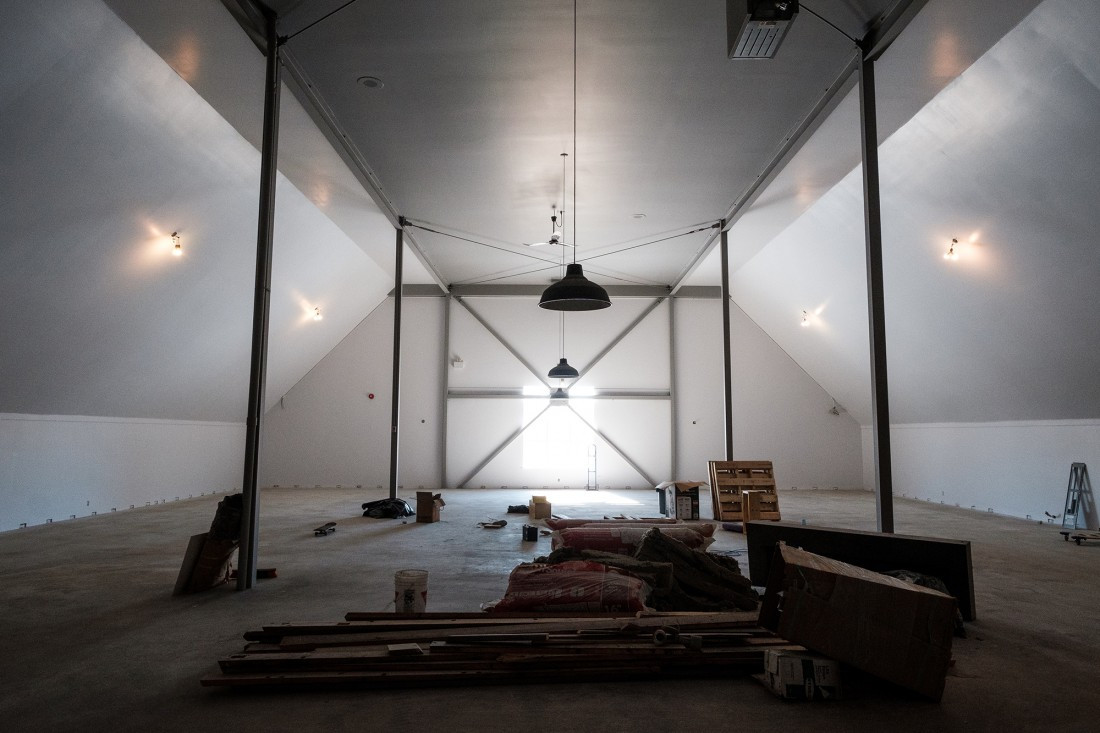
Many renovations are underway at the SFX campus, as the project is still in a pilot phase.
THE FUTURE OF LEARNING
At the SFX campus, we see the outcome of experiential learning in a job setting, not just a classroom. Hardy says this kind of research and diversity of industry work is making it’s way into the job market in what he calls the “new emerging economy.”
“We call it the green economy, the sustainable economy, the knowledge economy. Things have to change,” he says. “(We’re) going to need a knowledge-based student, a knowledge worker.”
Hardy defines a knowledge worker as an individual based in a diversity of knowledge.
“I think there is kind of a sense of urgency a lot of people who’re getting in these fields (have). They’re not just things to be abstractly studied,” Arnold says.
He explains how, with movement on the experiential learning front, we see an increase in interdisciplinary interactions.
“Traditionally there’s been a lot of information silos, and there hasn’t been a lot of crossover,” he says. “Experiential learning is a mechanism that brings those interdisciplinary approaches together in a real way. I think that is a trend that we’re seeing and happily so,” Arnold says.
Climate change is an example of how experiential learning intersects with environmental issues, which is a focus of Arnold’s work.
“Climate change and how ecological issues impact us culturally (is) a big issue right now,” he says. “There’s more and more cross-pollination in universities, interdisciplinary work but also within communities, (as) people are trying to find ways to adapt.”
He says experiential learning gives people a different perspective and understanding of what they’re learning while also challenging their own ways of knowing by sharing in their peers’ perspectives and experiences.
“Part of the experiential learning is taking all these different experiences and recognizing that we’re all having these different encounters simultaneously, and that’s often much broader than our individual experiences,” he says.
Arnold sees a future where experiential learning is a part of the way educators and learners diversify the way they engage, interpret and learn.
“I have a lot of hope in experiential learning as a way to get people engaged in things that matter in their own lives (and) really deepen their learning experience,” Arnold says.
Miller hopes that experiential learning will be built into curriculums and integrated into how teaching is exercised.
“In my ideal world, I would love to see experiential, outdoor and environmental education valued enough that every educator is given the room to do that and given the skills to handle that,” Miller says.
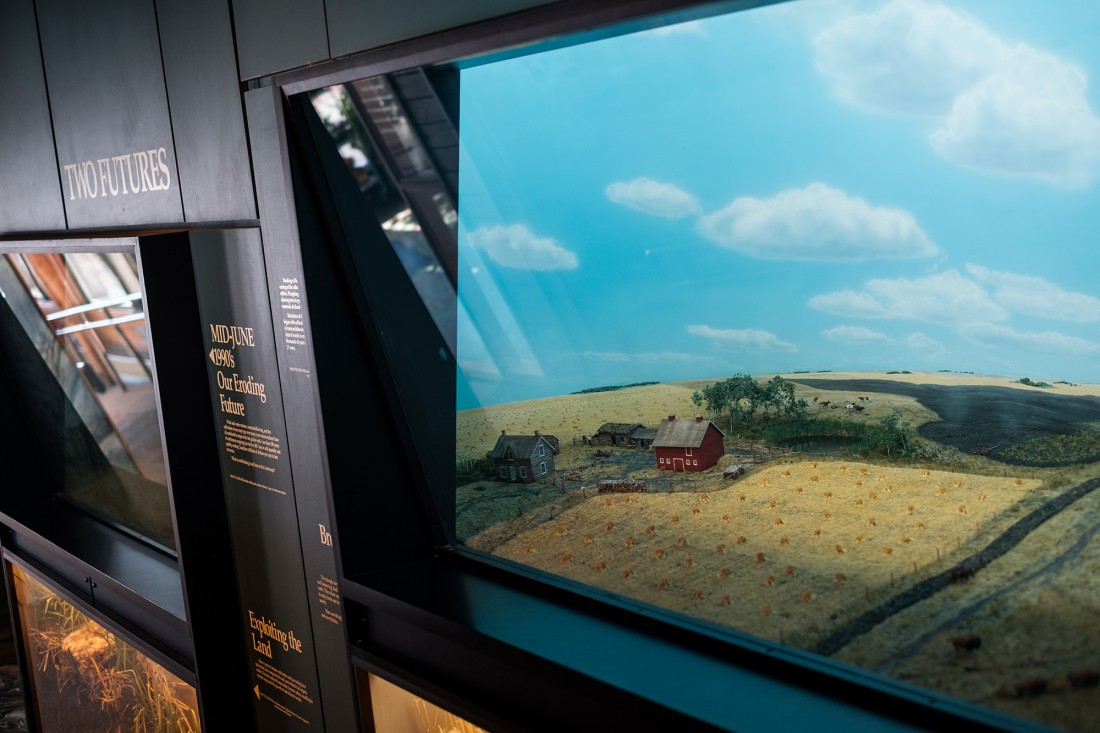
This diorama at FortWhyte Alive demonstrates how the prairie ecosystem has been affected by human intervention.
Published in Volume 71, Number 22 of The Uniter (March 2, 2017)

